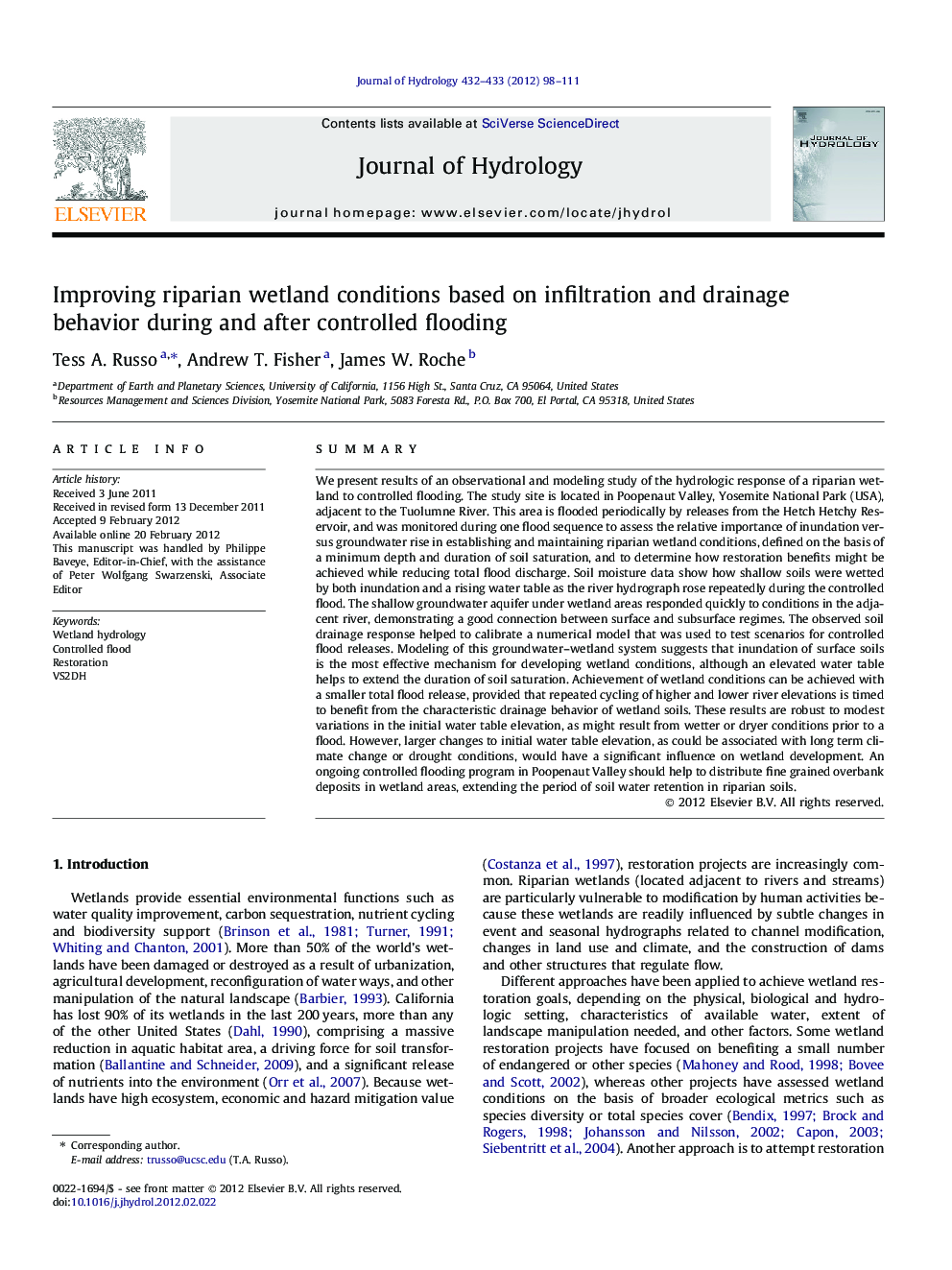| کد مقاله | کد نشریه | سال انتشار | مقاله انگلیسی | نسخه تمام متن |
|---|---|---|---|---|
| 4577047 | 1629995 | 2012 | 14 صفحه PDF | دانلود رایگان |

SummaryWe present results of an observational and modeling study of the hydrologic response of a riparian wetland to controlled flooding. The study site is located in Poopenaut Valley, Yosemite National Park (USA), adjacent to the Tuolumne River. This area is flooded periodically by releases from the Hetch Hetchy Reservoir, and was monitored during one flood sequence to assess the relative importance of inundation versus groundwater rise in establishing and maintaining riparian wetland conditions, defined on the basis of a minimum depth and duration of soil saturation, and to determine how restoration benefits might be achieved while reducing total flood discharge. Soil moisture data show how shallow soils were wetted by both inundation and a rising water table as the river hydrograph rose repeatedly during the controlled flood. The shallow groundwater aquifer under wetland areas responded quickly to conditions in the adjacent river, demonstrating a good connection between surface and subsurface regimes. The observed soil drainage response helped to calibrate a numerical model that was used to test scenarios for controlled flood releases. Modeling of this groundwater–wetland system suggests that inundation of surface soils is the most effective mechanism for developing wetland conditions, although an elevated water table helps to extend the duration of soil saturation. Achievement of wetland conditions can be achieved with a smaller total flood release, provided that repeated cycling of higher and lower river elevations is timed to benefit from the characteristic drainage behavior of wetland soils. These results are robust to modest variations in the initial water table elevation, as might result from wetter or dryer conditions prior to a flood. However, larger changes to initial water table elevation, as could be associated with long term climate change or drought conditions, would have a significant influence on wetland development. An ongoing controlled flooding program in Poopenaut Valley should help to distribute fine grained overbank deposits in wetland areas, extending the period of soil water retention in riparian soils.
► We monitor riparian wetland soil infiltration and drainage during a flood release.
► We model the subsurface to test various controlled flood scenarios for restoration.
► Vertical inundation is more efficient than lateral transport for wetland restoration.
► Cycling high and low flood stage results in the most efficient use of water.
► Proposed restoration scenarios are viable for varying antecedent water table heights.
Journal: Journal of Hydrology - Volumes 432–433, 11 April 2012, Pages 98–111